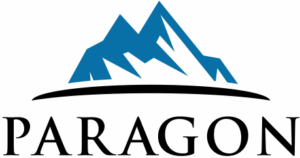Businesses need property insurance to manage their risks, but they don’t have to purchase it through the conventional insurance market. If your safety-conscious business is looking for an alternative risk solution, consider joining an ARU property insurance group captive.

What Are Property Insurance Group Captives?
A property insurance group captive is an alternative to conventional property insurance.
In the conventional commercial property insurance market, businesses buy coverage from a property insurance carrier. In exchange for premiums from the business, the insurance carrier handles claims and pays losses. If the business does not have any claims or if claims and administrative costs are lower than the premiums, the carrier generates an underwriting profit, which it keeps. The carrier also earns investment income. Even if the business works hard to manage risks and prevent claims, it does not receive any benefit or profits.
In the captive model, a company or companies own the insurance company that insures them. This allows businesses to retain ownership of premiums and investment income while maintaining greater control over costs and coverage.
There are multiple types of captive arrangements. In the case of a single-parent captive, a single company owns the captive. With a group captive, a group of members own the captive that insures all of them. The group captive model is best suited for large or midsize companies that want to gain the benefits of captive insurance but lack the resources to form a single-parent captive.
ARU’s Paragon Group Captive provides property coverage for businesses. It is a heterogeneous group captive, although it restricts certain classes.
How Do ARU Property Group Captives Work?
To become a member of Paragon Group Captive, businesses must go through an application process and meet eligibility requirements.
The layered approach to coverage gives members the potential to earn dividends while it also caps losses. All members have a deductible, the minimum of which is $25,000. The next layer of coverage consists of the dividend pool. Our A rated A.M. Best rated carrier fronts for the captive and issues the policies for lead coverage of $10 million. A final layer provides excess property coverage of up to $100 million.
Paragon Group Captive members also have access to superior claims handling and loss control services.
What Does the Property Group Captive Cover?
Paragon Group Captive provides “all risk” commercial property coverage. It does not include flood or earthquake coverage. Additionally, it excludes difference in condition (DIC) and boiler/machinery coverages.
Paragon Group Captive does not provide other types of coverage, such as general liability, workers’ compensation, or auto coverage. However, ARU does offer other group captives that provide these types of coverage.
Who Can Join the ARU Property Group Captive?
Paragon Group Captive is a heterogeneous group captive that accepts members from various industries. However, there are some restrictions and requirements:
What’s the Difference Between a Homogeneous and Heterogeneous Group Captive?
A group captive may have members that are similar or different from each other. Both approaches have benefits.
Paragon Group Captive is a heterogeneous group captive. Members come from many different industries, although there are some class restrictions and all members must be in good financial condition and adhere to good risk management practices.
Why Join an ARU Property Group Captive?
Commercial property insurance rates have been rising. Although businesses with poor loss histories or significant property exposures should expect to see especially steep rate hikes, even businesses with good loss histories and risk management may see their rates rise each year. These businesses are often highly profitable for insurance companies because the carriers keep the underwriting profits and investment income.
A group captive provides an alternative. Members of a group captive pay premiums that reflect their actual risks and loss history, not widespread property claims trends. Furthermore, group captive members retain ownership of their premiums and investment income. If they succeed in keeping their losses down, they earn dividends.
By joining a group captive, businesses enjoy improved cash flow and stabilized premiums. For midsize to large companies with good loss control measures in place, the captive model may result in significant savings compared to the conventional insurance model. At the same time, group captive members can leverage excess property coverage to safeguard against the risk of larger-than-expected losses.
Members of Paragon Group Captive also have access to custom loss control services and claims handling as well as flexible coverage and a flexible program structure. By joining a group captive, members enjoy greater market leverage and direct access to reinsurance markets.
When Is a Good Time to Join a Property Group Captive?
The property insurance market has felt the strain of rising natural catastrophe losses and higher-than-average inflation. This has led claims costs to increase. As a result, property insurance carriers have been raising their prices and adding restrictions to coverage. Whereas this makes sense from the insurance carrier standpoint, it creates a financial burden for businesses that have succeeded in keeping their own losses down.
In light of these trends, it’s no surprise that more businesses are turning to captive insurance.
The property insurance market may improve. Since cycles of hard and soft markets are typical, it’s normal for rates to soften after a period of hardening. However, rising natural disaster losses may mean prices remain elevated.
The captive insurance model is a long-term alterative that provides premium stability regardless of market trends.
For businesses that want to break free of insurance market cycles, ARU group captive insurance is a viable solution. If you meet the eligibility requirements and are ready to take control of your coverage, there’s no reason to wait.
Are you interested in joining a property group captive? Contact ARU to get started.
